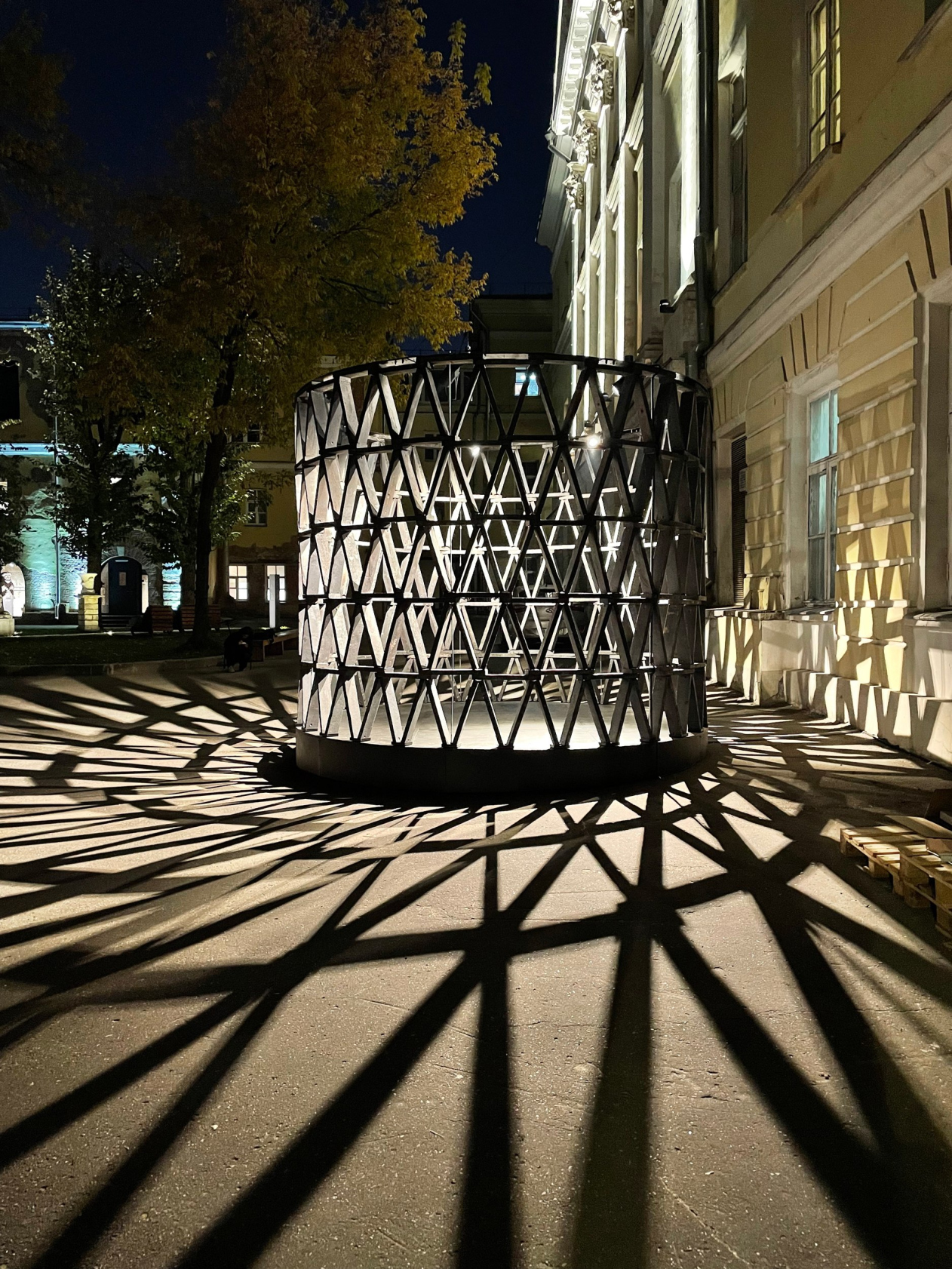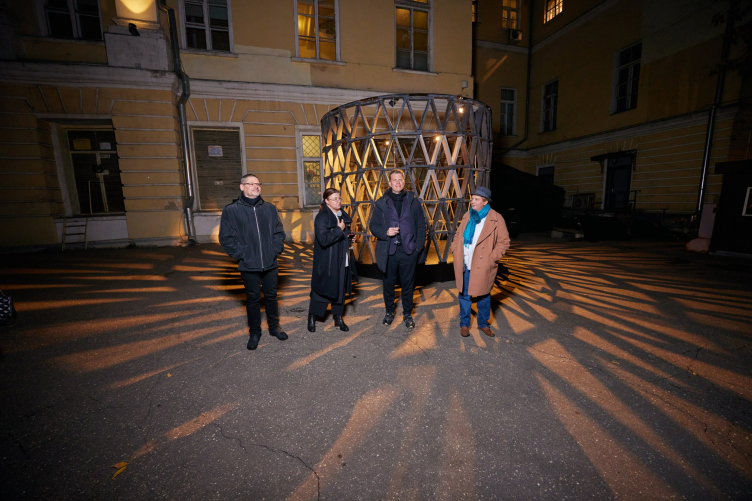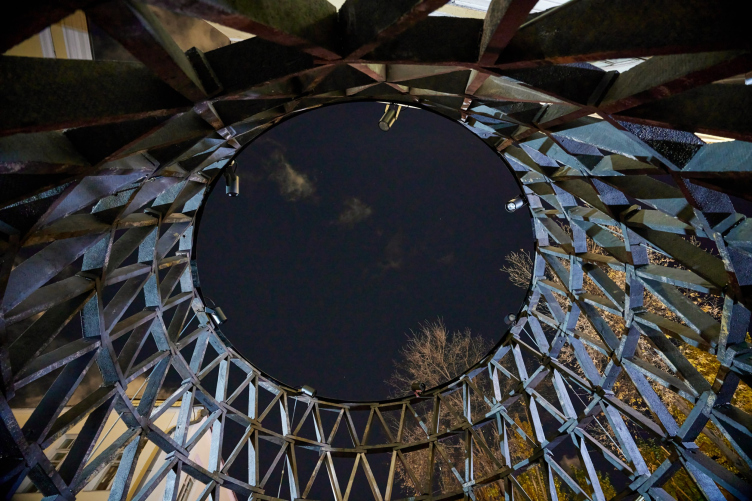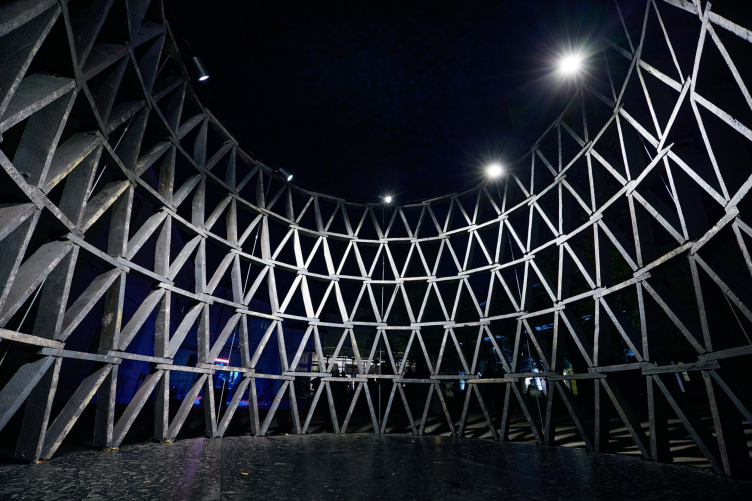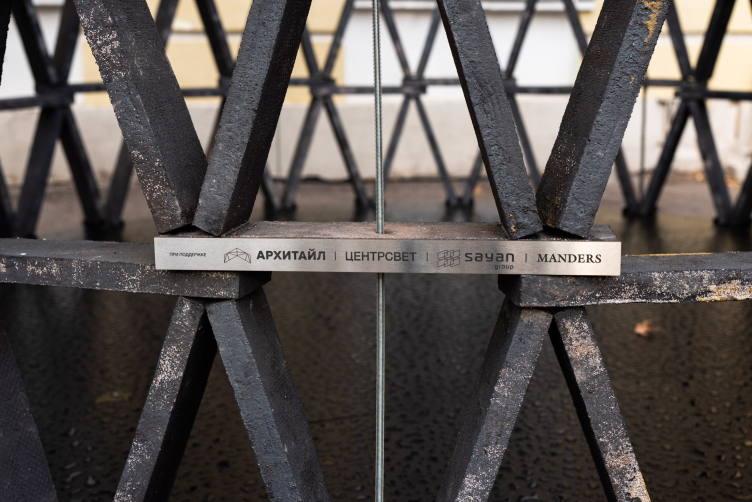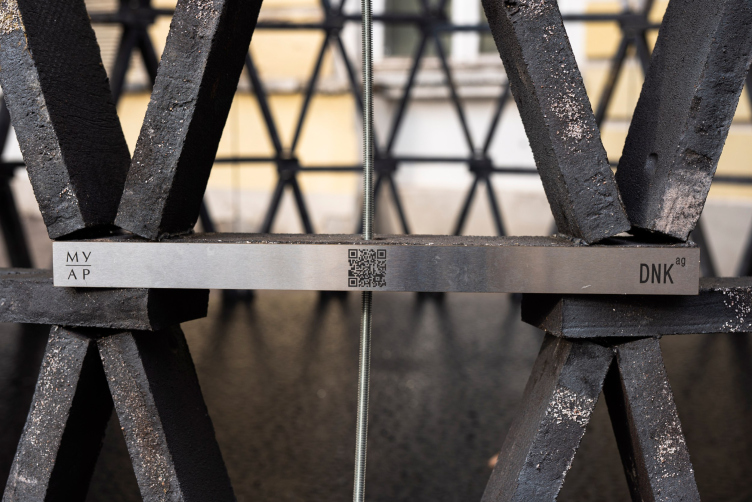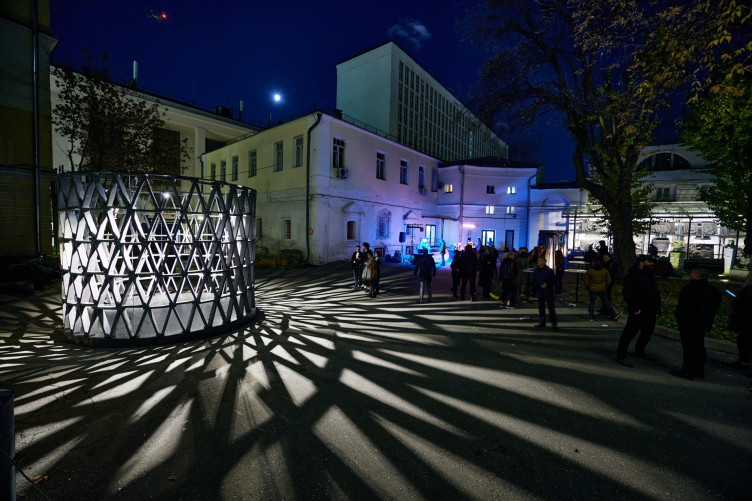The author of the pavilion and the director of the Museum of the Architecture at the inauguration. Pavilion XX in the yard of the Museum of Architecture, 10.2021
Copyright: Photograph © Gleb Loskutov
The structure is made of long, thin, and almost black, Roman-style, bricks of the Petersen Kolumbatm series. This series, as the architects emphasize, appeared in the line of the Danish factory Petersen Tegl – a family company founded in the 18th century and sticking to the traditional technologies of brick making – upon the initiative of Peter Zumthor during his work on the reconstruction of the Museum of the Cologne Archdiocese Kolumba.
For the installation, the height of which is 3 m, the diameter is 3.9 m, 420 bricks of two colors were used. The bricks were provided by the “Architile” company. Their thin plaques more than half a meter long – 52,8х10,8х3,7 cm – are laid to form a diagonal structure, which looks reminiscent of Shukhov’s construction (even though the authors do not mention Shukhov, you cannot get rid of the feeling).
Pavilion XX in the yard of the Museum of Architecture, 10.2021
Copyright: Photograph © Gleb Loskutov
Pavilion XX in the yard of the Museum of Architecture, 10.2021
Copyright: Photograph © Gleb Loskutov
The horizontals are formed by bricks, laid with juxtaposition; the vertical bricks are laid diagonally, at a 70-degree angle to the base. The result is rhombuses of exquisite vertical proportions. The pitch is 4 rhombuses; the cylinder is held together by metal rods, one of which supports, among other things, plaques with the sponsors’ names and a QR code that leads to the installation’s page on the DNK ag website.
Pavilion XX in the yard of the Museum of Architecture, 10.2021
Copyright: Photograph: provided DNK ag
Pavilion XX in the yard of the Museum of Architecture, 10.2021
Copyright: Photograph: provided DNK ag
The backlight is mounted in the upper horizontal belt and gives a bright dappled shadow on the asphalt around the object by night.
The architects themselves describe their project as follows: “Pavilion XX is about looking at habitual things from a different angle. Brick – a heavy, dependable, and thick material – forms a transparent openwork structure. Thanks to the backlighting, it is duplicated by a non-material structure, formed by the play of shadows.” And: “Pavilion XX is about exploring borders and emptiness. We are examining such properties of space as used/unused, empty/full, transparent/non-transparent. We create a space that is pure and free, a space that is valuable in itself.”
Pavilion XX in the yard of the Museum of Architecture, 10.2021
Copyright: Photograph: provided DNK ag
Pavilion XX in the yard of the Museum of Architecture, 10.2021
Copyright: Photograph © Gleb Loskutov
There is really some paradoxical quality, possibly deliberate, about this object. In addition to the fact that the brick (usually used for building blind walls) is used here to build something extremely transparent, it’s not just any brick, but as conservative as it ever gets: of the Roman format and hand-made at a family factory.
The structure, however, is lightweight, modern, and of an engineering character, but on the other hand, also having a long history – after all, Shukhov’s ideas have been around for more than a century. At the same time, such rhombuses and diagonals are quite a popular pattern of modern facades, but, as a rule, not brick ones. DNK ag’s creative work, on the contrary, is largely connected with brick facades, such as those of the office building on Vavilova Street, or the Rassvet LOFT, the winner of many recent awards.
It seems that in the anniversary installation, the authors are looking at how the aerial structure can be combined with a hyper-traditional brick, dating back to the experience of 2000 years ago. It can. But then again, at a glance, from a distance, the structure may seem metallic; in order to understand that what we are seeing is brick, we need to get closer – and be surprised at the broken frame.
